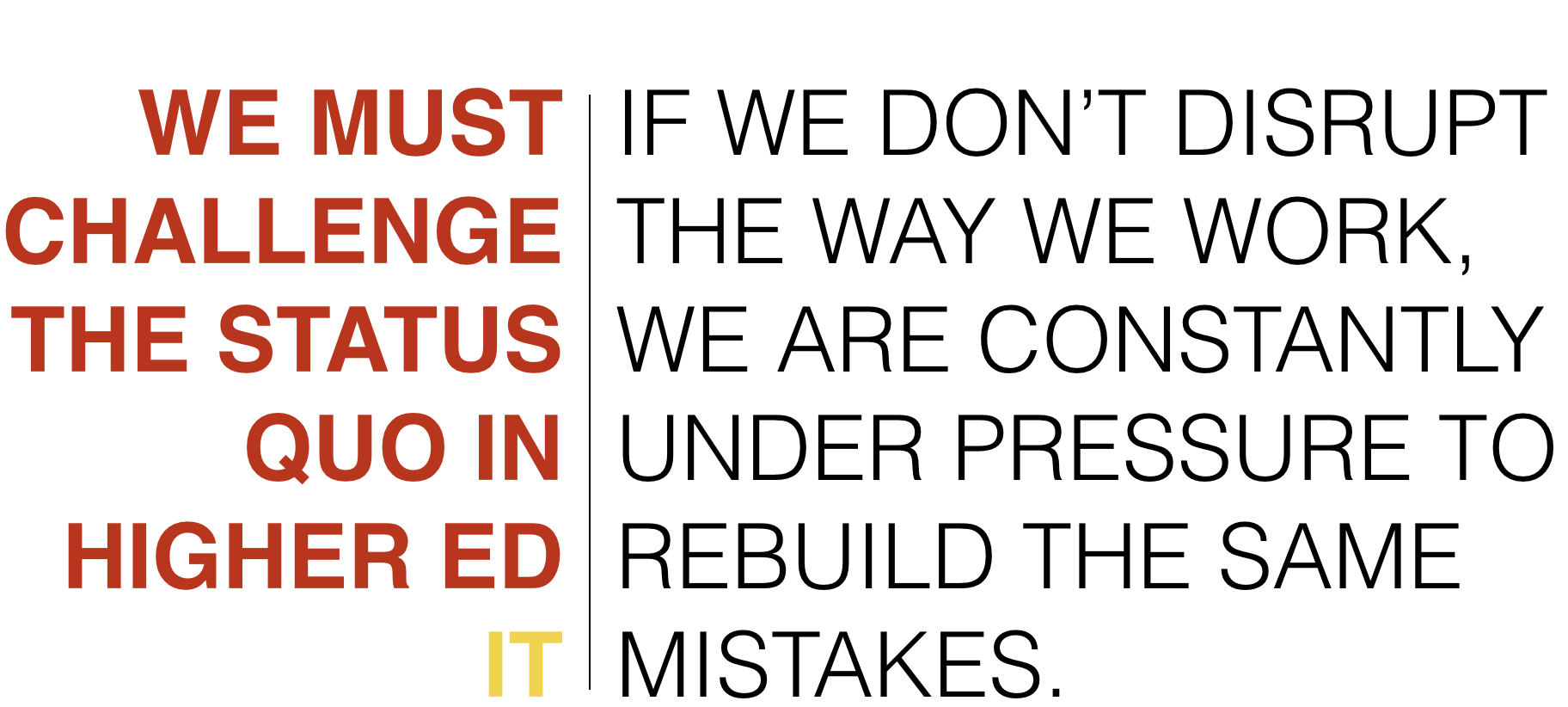Change isn’t easy. Whether it is a technical change, an organizational change, or a culture shift, variations from what we are used to are difficult. Those latter two types of change are often the hardest.
I bring this up is because ITS itself must change to keep up with growing expectations, the institutional vision, and our new strategic priorities. It’s not enough for ITS to just keep the lights on, so to speak. We’re expected to be a strategic part of the university’s mission. ITS plays a significant and expanding role in institutional-wide initiatives that advance teaching and learning. SAIL is a perfect example of this. I’m confident that we will meet these expectations, but it will take teamwork to get there.

Change is what we do at ITS. In our day-to-day business, we are affecting and changing many services and systems that can have great impact on our customers. A large part of what defines our operational excellence—and largely the reputation of the whole of ITS—comes down to how we plan and implement these changes. To the customers, the outcomes reflect on ITS as an organization, not on us as individuals. If there’s a moral to this story, it’s that we’re in this together.
I’ve noticed a few changes that we can make to improve our organization. I’ve also heard from some of you about areas where we have room for improvement. Here are a couple ways in which we are evolving:
- Resource planning. Time tracking is enormously helpful, as I wrote about in my note before the Labor Day weekend. The next step is forecasting where and when we will be spending our time. We have to get better at this as an organization, which will help me advocate for the right resources as we continue on this journey. Resource planning will help us address the skill gaps we have for meeting our goals, gaps that we can fill by retraining and hiring IT professionals.
- Change management process. Over the next few months, we will be maturing this process. Until we have a new one to share with you, we will all be held accountable to the current change management processes. When in doubt about a change, bring it up with the Service Management Team so we can address it. We all have different perspectives and these can help assess the impact that a change has on the customers.
What ideas to improve our organization and services do you feel should be discussed? I’d love to hear it. Please email it to me or leave a comment below.
None of what we need to accomplish can be done by a single person, or even by single departments, but we each have a responsibility to be a part of this team. Collectively is how we will achieve our mission. That is why I look forward to continuing this conversation at the All-Hands Meeting on October 10th. I hope to hear more of your ideas then.
